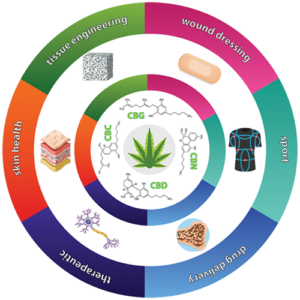Laser welding is a highly advanced and precise process for producing high-quality welds with minimal distortion and defects, even on complex materials. Whether used in automotive, aerospace, or manufacturing industries, laser welding offers numerous benefits over traditional welding methods.
However, the welding technique is expensive, mainly because of the high initial investment to acquire the material, among other costs. Therefore, many choose other methods because of their reduced costs. Moreover, calculating the cost of laser welding may take time due to the various factors influencing it. Understanding these cost-driving factors is essential for making informed decisions and optimizing welding projects.
This article explores the factors influencing laser welding cost, provides estimates, and comprehensively analyzes how to calculate them effectively.
Factors Influencing Laser Welding Cost
Laser welding services is an advanced and precise process offering numerous benefits, including high weld quality, minimal distortion, and suitability for complex materials. However, like other processes, various factors influence the cost of laser welding. Understanding these factors will help in making accurate cost estimations.
Below are the main factors that play a significant role in determining laser welding costs:
Material Type
The type of material you are welding significantly influences laser welding costs. Metals like aluminum, stainless steel, and titanium have different reflectivity, thermal conductivity, and melting points, each affecting the laser’s energy requirements. For example, aluminum laser welding may require more advanced laser because it is a highly reflective material, requiring technology to prevent reflection losses and increasing costs. In addition, metals that are generally hard to weld may also demand more precision or slower welding speeds, raising the price.
Thickness of Material
The metal’s thickness directly impacts the laser welding process. Thicker materials require more energy and slower welding speeds to ensure complete penetration, prolonging the process and increasing operational costs. Thinner materials may also reduce welding time and expenses. However, they also require careful control to prevent burn-through, warping, or other heat-associated defects.
Laser Power and Equipment Type
The power of the laser and the type of equipment may also influence welding costs. Generally, high-powered lasers are capable of welding thick or difficult-to-process materials. However, such machinery often comes with higher initial costs and operating expenses. Similarly, advanced laser systems, such as fiber or diode lasers, may offer better efficiency and performance but also elevate capital investment. Therefore, it’s often best to leave the choice of equipment based on the project’s specific requirements to prevent accruing unnecessary equipment costs for thinner or easy-to-weld materials.
Joint Complexity and Design
The complexity of the weld joint also plays a crucial role in determining the cost. Simple, straight welds are quicker and easier to execute, requiring less setup and preparation. However, intricate designs, multi-dimensional welds, or joints in hard-to-reach areas may require specialized laser settings, additional tooling, or even custom fixtures, contributing to higher costs. The more complicated the welding pattern, the longer the process will take, increasing labor and machine operation time.
Welding Speed and Efficiency
Laser welding is known for its high speed, but this factor may depend on the material, joint design, and laser type. Faster welding speeds reduce labor time and increase throughput, thus lowering the overall cost per unit. However, pushing the laser at maximum speeds can compromise quality, leading to defects and rework, ultimately raising costs. Achieving the right balance between speed and quality is essential for cost optimization.
Labor and Operator Expertise
Even though laser welding is highly automated, the operator’s skill and expertise still influence the cost. You require skilled technicians who fine-tune the laser welding parameters depending on material type and joint designs. This may be the difference between avoiding errors and ensuring high-quality welds. Labor costs may also vary based on location, the complexity of the setup, and whether additional operators are required for supervision or post-weld inspections.
Production Volume
The quantity of parts you are welding also influences the overall cost. Higher production volumes may result in economies of scale, where the cost per unit decreases as the setup and machine operation become more efficient. In contrast, small batches or custom jobs may incur higher costs per unit due to the time spent setting up and calibrating the laser welding system.
How Much Does Laser Welding Cost?
As discussed above, the cost of laser welding may vary depending on several factors, including material type, joint complexity, and production volume. Generally, laser welding is more expensive than the standard metal arc welding process, mainly because of its sophistication and high machine costs. For example, the machine may cost around $2,500 to $10,000 or even more, depending on its sophistication, as some may cost up to $100,000 or even a million.
Moreover, hourly costs may cost about $50 or more, depending on the machine type, location, and other factors. Some may charge laser welding per inch, and this will depend on the type of weld, material type, volume, etc.
For example, welding materials that require higher laser power or advanced equipment, such as aluminum or titanium, may drive up costs due to the need for specialized lasers. In contrast, materials like steel are more affordable to weld. Thicker materials or complex joints may also increase costs, requiring more energy and time to achieve a quality weld.
In addition, setup fees for small batches or custom jobs can further increase the cost per unit. In high-volume production, economies of scale typically reduce the price per weld, making it more cost-effective. For more complex laser welding systems or high-end jobs, costs can be higher than $50 to $100 per hour of machine operation, especially in specialized industries such as aerospace or medical device manufacturing.
Conclusion
Calculating the cost of laser welding requires a detailed understanding of the various factors influencing it, such as material type, machinery, joint complexity, and production volume. While laser welding may be more expensive than traditional methods, its precision, speed, and quality often make it the preferred choice for industries requiring high-performance welds.
Therefore, welders must consider the factors discussed and carefully calculate the costs. Optimizing these factors will even prove effective for businesses to reduce and ensure cost-effective laser welding solutions, achieving better results for both small—and large-scale production needs.




